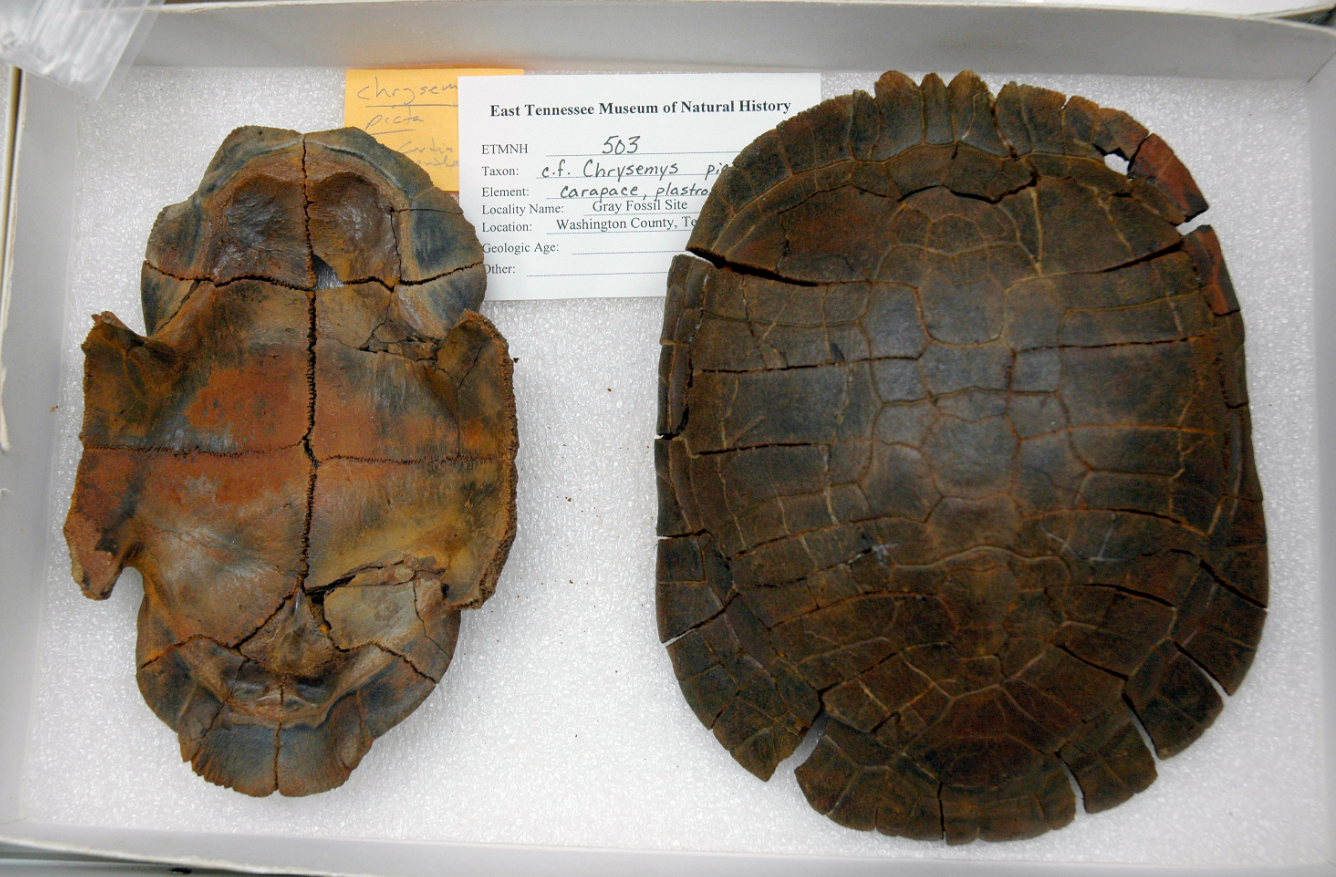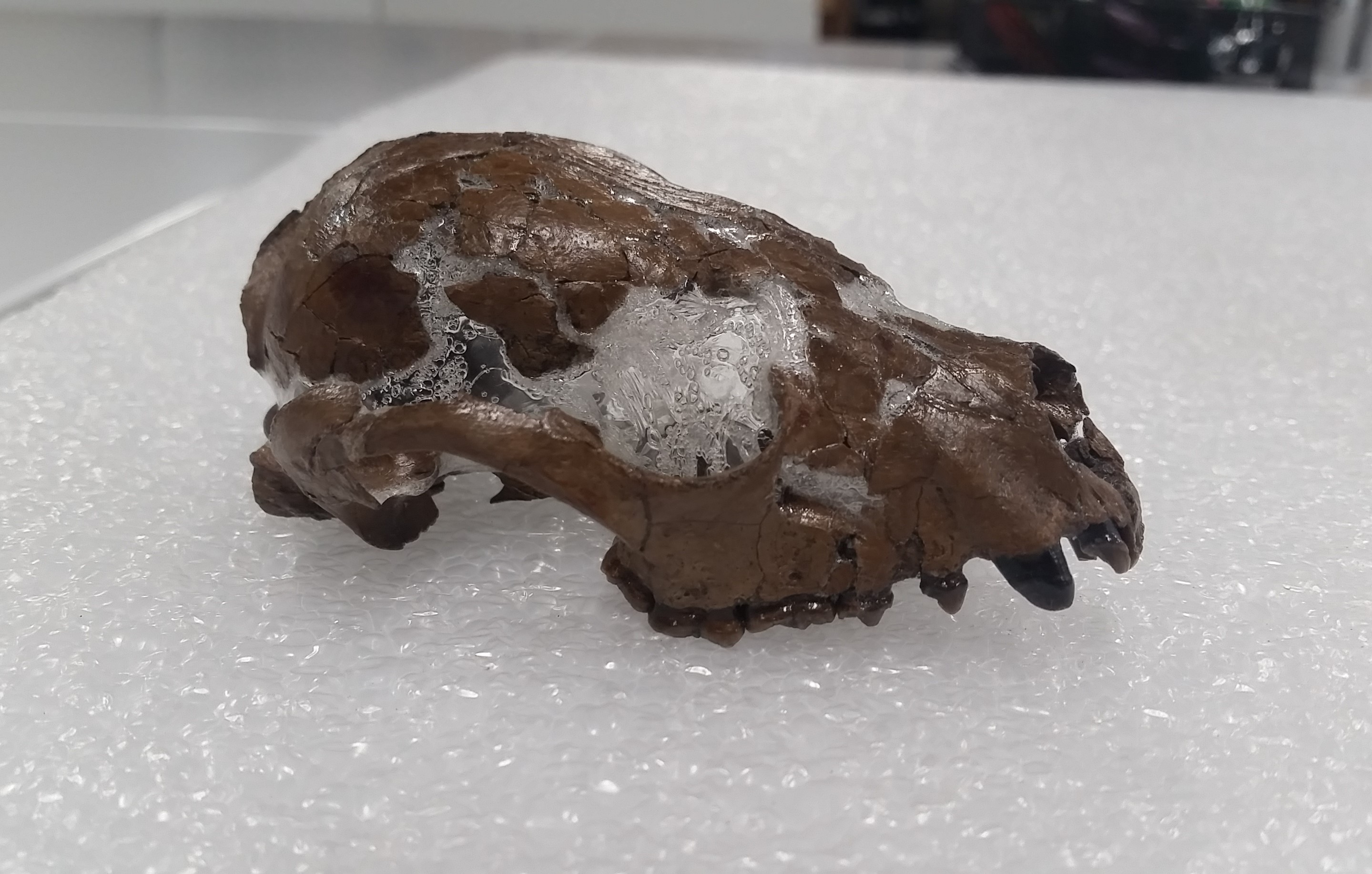Thousands upon thousands of prehistoric animals are pristinely preserved at the site of an ancient sinkhole-pond in the US. The mind-blowing site is a snapshot of a beautiful ecosystem that thrived nearly 5 million years ago, a time when rhinos, tapirs, giant salamanders, red pandas, and giant flying squirrels roamed North America.
It’s known as the Gray Fossil Site, located in the community of Gray in Washington County, northeastern Tennessee. It was accidentally discovered during the laying of a road in 2000. The roadworks continued as scientists studied the scene for a few months, but the construction was halted and moved once it became apparent just how special the site was.
Today, the area is a relatively unremarkable patch of land near the Appalachian Mountains, but between 4.5 to 4.9 million years ago, the site was a life-filled pond formed within a sinkhole, surrounded by balmy, lush forest.
The region’s unique geology made the Gray Fossil Site a perfect time capsule. The sinkhole-pond, formed in limestone bedrock, created a low-oxygen, sediment-rich environment that slowed decay and protected remains from scavengers. Fine sediments gently buried the animals and plants, preserving them in stunning detail for millions of years.

Fossilized shell of a painted turtle (Chrysemys) found at Grays Fossil Site.
Upon digging over 20 meters (66 feet) into a hill, researchers started to discover an unbelievably diverse selection of “unusually well preserved” vertebrate fossils, including tapir, elephant, rhinoceros, alligator, as well as many smaller vertebrates, including fish, frogs, and turtles.
All in all, well over 100 species of ancient animals have been unearthed here, not to mention the many remains of plants, fungi, and algae.
“We have about 38,000 fossils in our collection,” Matthew Inabinett, the collections manager at the Gray Fossil Site, reportedly said. “That’s actually cataloged specimens, not individual pieces.”
There are also a bunch of animal species you wouldn’t expect to see in this part of North America. One is a distant relative of the red panda, a species native to the eastern Himalayas and southwestern China in Asia, known as Pristinailurus bristoli. Another is an ancient giant flying squirrel, called Miopetaurista webbi, that appears more similar to those found today in Japan, China, and Indonesia.

Fossilized skulls of the red panda relative (Pristinailurus bristoli) found at the Gray Fossil Site.
These unexpected animals suggest there are “previously unknown historical biogeographic connections” between the eastern US and Asia. Their presence indicates that plenty of animals migrated at the end of the Miocene, around 5.3 million years ago, from the “Old” and “New World” (and, in a few cases, the opposite direction). The migrations were likely to be driven by increasing humidity in northeastern Asia and growing aridity in North America, creating a climatic “pressure pump” that encouraged migration across the since-sunken Bering Land Bridge between northern Asia and Alaska.
Tennessee and East Asia are separated by the Pacific and over 10,000 kilometers (6,214 miles), but the Gray Fossil Site is a reminder that these two worlds were once tightly connected.
Source Link: A 4.9 Million-Year-Old Ecosystem Of Interconnected Worlds Is Preserved In A Tennessee Sinkhole